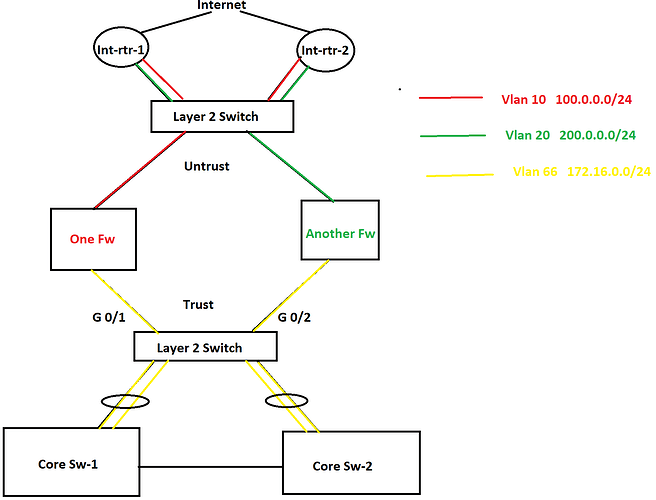Thanks again for your reply. The layer 2 switch in the diagram is a 3850 switch and it has a port-channel with each core switch. Therefor, I do not see that much drops on the port-channel interfaces on any side. Most of the drops are being noticed at G 0/2 interface on the Layer 2 switch. Besides this, the core switch has multiple inbound interfaces. That is why I am kind of confused where I should put the QoS shaping policy. Because if I put it on the outbound port-channels on the core switches, it will not help because they are not encountering any bandwidth saturation. Since the core switches have multiple inbound interfaces, marking on multiple interfaces on the core switches will not be an idle solution. That is the reason why I was thinking to put a shaper on the G 0/2 interface on the layer 2 switch, but according to you, layer 2 switch interface can not do traffic shaping based upon IP addresses.
According to the requirement, putting a QoS policy on the firewall interface is not an option. Besides this, firewall interface is not encountering that much drop packets, because packets are getting dropped on the G 0/2 interface of the Layer 2 switch before it arrives at the firewall.
Question
===============
If a put a policy-map on an interface to mark traffic, would that policy-map come into play even if the interface does not experience bandwidth saturation? If an interface does mark packets even it is not saturated, then I can put a marking policy-map on the port-channels on the core switches going to the layer 2 switches and configure traffic shaper based on marking on the Gig 0/2 interface of the Layer 2 switch.
What DSCP values should I use to mark different applications?
What should I do for inbound traffic coming from the firewall to prioritize the same applications? Do I not need any QoS policy for the inbound traffic as well? If so, where should I put them?
Thanks again for your great help.
Azm
